|
|
|
|
|
 |
 |
 |
 |
|
P R O F I L
E
|
|
|
|

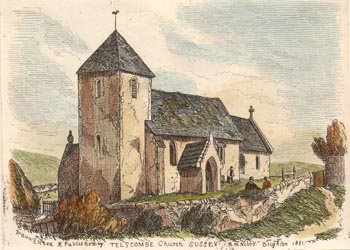 William Osborn - Yeoman Farmer
William Osborn - Yeoman Farmer
1771 - 1838
Warren Farm
Telscombe
Sussex
United Kingdom
On the 17th February
1771 William (2), the first child of Elizabeth and William Osborn was christened
in Keymer, Sussex. The eldest of three boys, he was to become a Yeoman Farmer.
His two brothers Thomas and Henry were to marry and bring up families in Keymer,
but William had different ideas. After marrying Sarah Buckman, one of eight
children of a Clayton farmer in 1800, William took Lucas's, a farm in Cuckfield.
All was not well and Sarah died in 1810 aged 30 and childless. She was buried at
Clayton.
Grace, 21 year old daughter of a labourer John Souter, was probably his
housekeeper and he was to marry her in November 1812 by special licence. The reason behind the special licence marriage also explains the naming of their son born in the same year, William Souter. It was not until much later
in 1836 that he was eventually formally christened William Souter Osborn. There were three considerations in this arrangement albeit more expensive and faster than a church wedding. Firstly by marrying by special licence, there were no banns to be read and so the premature pregnancy would not become public gossip. Secondly, the initial surname Souter of the first child could be perpetuated as a middle name thereafter. Thirdly, the late christening eventually of all three children was necessary so that the children could substantiate their full age and parenting for their own marriages and other legal reasons.

In 1812 William and family vacated Lucas's and moved to Hammonds Mill, Clayton
with his new wife Grace. In the same year they had a further child, a daughter
Mary Ann Souter Osborn.
After their move to Hammonds Mill, William (2) and Grace Osborn were to have a
further son, John Souter Osborn - born 1816 and registered in Ditchling, their
last child. In 1817 the family moved further south to Warren Farm, perched on
what is now known as Telscombe Cliffs high on the South Downs. Warren Farm and
its environs was where William was to spend the rest of his life.
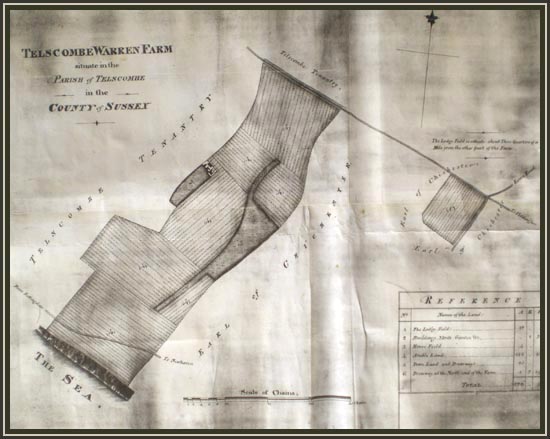
Map: Telscombe Warren Farm circa 1800, 226 acres. (Kent RO u269 p18)
Porto Bello was a small lonely, coastal inlet in the cliffs and hamlet of Telscombe, adjacent to Warren Farm. The Osborn family occupied two significant plots of land here as tenants from 1817.
1. Coastal Blockade Station
The first described in 1829 as "All the newly erected Dwelling House with a piece of ground containing on the whole one acre and twenty perches situate at Portobello in the parish of Telscombe in the occupation of William Osborne. This lot is copyhold of the Manor of Telscombe in two tenements subject to 4d rents and two heriots of Best Beast on death or alienation and to fines at will on admission." This was lot 8 in the sale of Newhaven Brewery Taverns and Public Houses and sold for 300 pounds.
The Coastal Blockade Station in 1825 is listed by Bullen (1995). Sometime around 1831 when the Coastal Blockade was replaced by the Coastguard Services, Coastguard Station Cottages were built in the immediate vicinity.
The same site was again for sale in 1837 but this time in the occupation of Officers of His Majesty's Customs under a lease that was due to expire the day of the sale the 24th June. The rents had increased to 4 shillings however. It would appear that William Osborne had sub-let the premises to the Coastal Blockage services.
2. The Brewers Arms
By far the oldest building, built of flint and beach pebbles, was the Smuggler's Rest as it is known today. The first building on the site can be traced to a farmhouse constructed in 1765. It was later converted into a pub called the Lifeboat Inn, so named because the owner constructed a shaft down to the beach in order to launch a lifeboat. The building was extensively renovated around 1809-11. In 1817 the Inn building was used by the local controller of customs but appears to have reverted to an ale house and was called the Brewers Arms Inn. The isolated position on the main coast road made it an attraction for smugglers and the original building had extensive cellars and passages running down to the beach below. Consequently the Coastal Blockade and later Coastguard Station was established nearby. 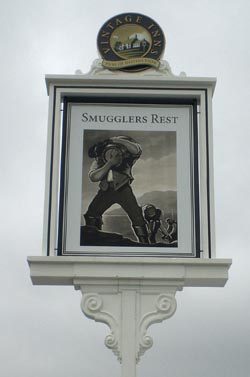
William Osborn(e) was the tenant innkeeper in 1829 when it was sold by the executors of Edward Dean, as part of the disposal of the Newhaven Brewery Public Houses. The sale particulars describe it as a house and garden, copyhold the Manor of Telscombe in two tenements subject to Quit rents of 4d and two heriots of Best Beast on death or alienation and to fines at will on admission. It sold for 100 pounds. Sold again in 1837 as a private residence, William Osborn(e) continued to tenant the former Brewers Arms Inn after the sale. This time it only reached 90 pounds when sold to the Reverend Hobchine? (ESRO AMS6300/4/3 and /4)
In the 1936 guide book to Peacehaven and Telscombe Cliffs the house is highlighted for its smuggling past. After years of subsequent dereliction in the 20th century it reopened in 1997 as the Badger's Watch. The name originated from a modern day contest to rename and was prompted by a badgers sett found in the garden. (see Troak M 2008, p39-51) About 20 years later it was renamed again as the Smuggler's Rest.
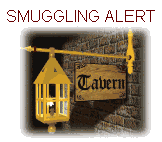 This isolated access to the beach was ideal for the smuggling trade. Malcolm Troak details smuggling incidents in the vicinity reported in the Sussex Advertiser as early as 1794. These include the tragic end for Riding Officer Lindsey, when he rode over the cliffs on his way to Portobello with a captured smuggler. Tracks still lead to Telscombe village and Southease to the bridge over the Ouse below Itford Farm. In January 1823 the various preventive forces set out to ambush smugglers at the bridge. Fifteen to twenty smugglers escaped along deep ditches and the value of goods seized was minimal. Mary Waugh in her book, mentions Bearshide (Peacehaven) and Porto Bello (Telscombe Cliffs) several times in connection with the illicit trade. Furthermore it was not illegal to sell smuggled goods and many a tavern advertised "Genuine Crow Link" schnapps, named after the landing place near Birling Gap, East Dean. This isolated access to the beach was ideal for the smuggling trade. Malcolm Troak details smuggling incidents in the vicinity reported in the Sussex Advertiser as early as 1794. These include the tragic end for Riding Officer Lindsey, when he rode over the cliffs on his way to Portobello with a captured smuggler. Tracks still lead to Telscombe village and Southease to the bridge over the Ouse below Itford Farm. In January 1823 the various preventive forces set out to ambush smugglers at the bridge. Fifteen to twenty smugglers escaped along deep ditches and the value of goods seized was minimal. Mary Waugh in her book, mentions Bearshide (Peacehaven) and Porto Bello (Telscombe Cliffs) several times in connection with the illicit trade. Furthermore it was not illegal to sell smuggled goods and many a tavern advertised "Genuine Crow Link" schnapps, named after the landing place near Birling Gap, East Dean. 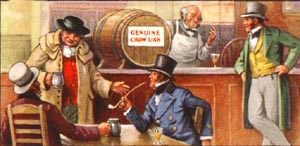 As smuggling was particularly active in the first half of the 19th century, such circumstantial evidence suggests some direct or indirect involvement by the Osborn family who were present from 1817 - 1863. As smuggling was particularly active in the first half of the 19th century, such circumstantial evidence suggests some direct or indirect involvement by the Osborn family who were present from 1817 - 1863.
Probably at a time when William was suffering ill health he decided to have his
children christened at Chailey in 1836. This no doubt put to bed an issue that
had originated with the illegitimate birth of son William and the use of the
Souter name.
William died in 1838 of cancer having made his will a month earlier. His grave
is to be seen to this day in the churchyard in the old village church of
Telscombe. His wife Grace survived him. She died in 1847 aged 56 and is buried
at Telscombe. In his will he left his wife an annuity and equally divided his
estate between his three children.
Initially running the family farm after their father's death, the three children
each fared differently as will be documented in their life stories....(click below on relationships for more details)
Bibliography:
Bullen M (1995) Contraband County Sussex Smuggling in the 19th century, Toby Press. p55: Troak M (2008) "The Changing Years" New Anzac, p39-51: Waugh M (1985) "Smuggling in Kent and Sussex 1700-1840" Countryside Books, ch.7.
Porto Bello name: The Battle of Porto Bello took place in 1739 between a British naval force aiming to capture the settlement of Portobello in Panama, and its Spanish defenders. At the time the War of the Austrian Succession, also known as the War of Jenkins' Ear, was in the early stages. It resulted in a popularly acclaimed British victory. Although it was greatly exaggerated, the capture of Porto Bello became a popular triumph throughout the British Empire and the name Portobello was frequently used to commemorate the battle, as in Portobello Road in London, and Porto Bello in Virginia.
Email: info@thespas.co.uk (click here to send an email)
ADDITIONAL INFORMATION
 William Osborne of Patcham
 Elizabeth Osborne (formerly Mitchell)
 Sarah Osborn (formerly Buckman)
 Grace Osborn (formerly Souter)
 William Souter Osborn
 Mary Souter Osborn
 John Souter Osborn
DESTINY CATEGORY
18th CENTURY second half, 19th CENTURY first half, PAST, PEOPLE, Smuggling
LANDSCAPE
Coastal, Rural
REGION
England - Southern
|
|


 William Osborn - Yeoman Farmer
William Osborn - Yeoman Farmer









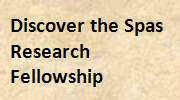




 This isolated access to the beach was ideal for the smuggling trade. Malcolm Troak details smuggling incidents in the vicinity reported in the Sussex Advertiser as early as 1794. These include the tragic end for Riding Officer Lindsey, when he rode over the cliffs on his way to Portobello with a captured smuggler. Tracks still lead to Telscombe village and Southease to the bridge over the Ouse below Itford Farm. In January 1823 the various preventive forces set out to ambush smugglers at the bridge. Fifteen to twenty smugglers escaped along deep ditches and the value of goods seized was minimal. Mary Waugh in her book, mentions Bearshide (Peacehaven) and Porto Bello (Telscombe Cliffs) several times in connection with the illicit trade. Furthermore it was not illegal to sell smuggled goods and many a tavern advertised "Genuine Crow Link" schnapps, named after the landing place near Birling Gap, East Dean.
This isolated access to the beach was ideal for the smuggling trade. Malcolm Troak details smuggling incidents in the vicinity reported in the Sussex Advertiser as early as 1794. These include the tragic end for Riding Officer Lindsey, when he rode over the cliffs on his way to Portobello with a captured smuggler. Tracks still lead to Telscombe village and Southease to the bridge over the Ouse below Itford Farm. In January 1823 the various preventive forces set out to ambush smugglers at the bridge. Fifteen to twenty smugglers escaped along deep ditches and the value of goods seized was minimal. Mary Waugh in her book, mentions Bearshide (Peacehaven) and Porto Bello (Telscombe Cliffs) several times in connection with the illicit trade. Furthermore it was not illegal to sell smuggled goods and many a tavern advertised "Genuine Crow Link" schnapps, named after the landing place near Birling Gap, East Dean.  As smuggling was particularly active in the first half of the 19th century, such circumstantial evidence suggests some direct or indirect involvement by the Osborn family who were present from 1817 - 1863.
As smuggling was particularly active in the first half of the 19th century, such circumstantial evidence suggests some direct or indirect involvement by the Osborn family who were present from 1817 - 1863.